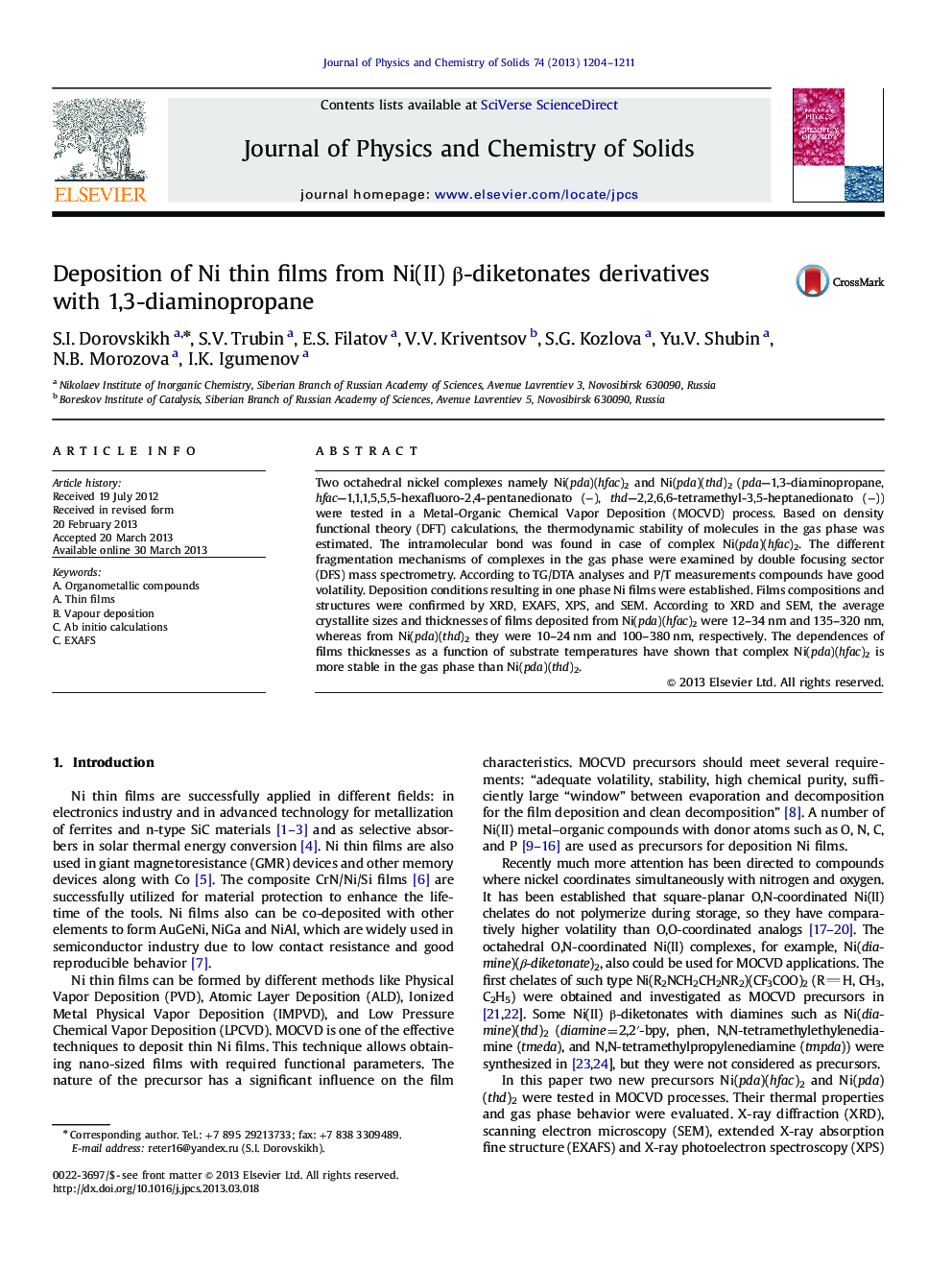| Article ID | Journal | Published Year | Pages | File Type |
|---|---|---|---|---|
| 1516293 | Journal of Physics and Chemistry of Solids | 2013 | 8 Pages |
•Two octahedral nickel complexes were used for deposition of metallic nickel films by MOCVD.•The influence of complexes structural features on the thermal behavior, fragmentation mechanisms was demonstrated. The effect of precursor properties on film characteristics was invesitigated.
Two octahedral nickel complexes namely Ni(pda)(hfac)2 and Ni(pda)(thd)2 (pda—1,3-diaminopropane, hfac—1,1,1,5,5,5-hexafluoro-2,4-pentanedionato (−), thd—2,2,6,6-tetramethyl-3,5-heptanedionato (−)) were tested in a Metal-Organic Chemical Vapor Deposition (MOCVD) process. Based on density functional theory (DFT) calculations, the thermodynamic stability of molecules in the gas phase was estimated. The intramolecular bond was found in case of complex Ni(pda)(hfac)2. The different fragmentation mechanisms of complexes in the gas phase were examined by double focusing sector (DFS) mass spectrometry. According to TG/DTA analyses and P/T measurements compounds have good volatility. Deposition conditions resulting in one phase Ni films were established. Films compositions and structures were confirmed by XRD, EXAFS, XPS, and SEM. According to XRD and SEM, the average crystallite sizes and thicknesses of films deposited from Ni(pda)(hfac)2 were 12–34 nm and 135–320 nm, whereas from Ni(pda)(thd)2 they were 10–24 nm and 100–380 nm, respectively. The dependences of films thicknesses as a function of substrate temperatures have shown that complex Ni(pda)(hfac)2 is more stable in the gas phase than Ni(pda)(thd)2.
Graphical abstractFigure optionsDownload full-size imageDownload as PowerPoint slide
